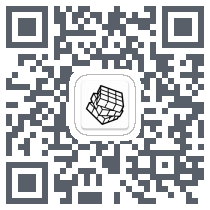Civil procedure exam2
nation of the pilot. The court should grant the motion, because the pilot’s physical condi
tion is in controversy, but the court should also impose conditions on the examination con
sistent with Federal Rule of Civil Procedure 35.Rule 35 allows the court to order a physic
al examination of a party, for good cause, when that party’s mental or physical condition
is in controversy—that is, when the condition bears significantly on the outcome of the ca
se, and when the parties genuinely disagree about it. Responsibility for the accident is a
central issue in this case. A witness has said that the pilot was slumped over the contro
ls and appeared to be unconscious just before the airplane collided with the hangar. This
evidence suggests that the pilot may have suffered some sort of medical crisis during the
landing, which could have caused the accident. Accordingly, the pilot’s physical condition
might be a dispositive fact here. The pilot, for his part, claims that the air traffic co
ntroller’s instructions were to blame. Because of this disagreement, the pilot’s physical
condition is in controversy, and the court should order a physical examination.Under Rule
35, a suitably licensed examiner must conduct the examination at a specified time and plac
e, and within a defined scope of inquiry. The court should therefore specify that the exam
ination be limited to tests and protocols that might reveal any sort of condition that wou
ld cause someone to lose consciousness, commensurate with the scope of the controversy her
e.2.The first question is how the court should rule on the airport’s motion for physical e
xamination of the pilot. The court should grant the motion, because the pilot’s physical c
ondition is in controversy, but the court should also impose conditions on the examination
consistent with Federal Rule of Civil Procedure 35.Rule 35 allows the court to order a ph
ysical examination of a party, for good cause, when that party’s mental or physical condit
ion is in controversy—that is, when the condition bears significantly on the outcome of th
e case, and when the parties genuinely disagree about it. Responsibility for the accident
is a central issue in this case. A witness has said that the pilot was slumped over the co
ntrols and appeared to be unconscious just before the airplane collided with the hangar. T
his evidence suggests that the pilot may have suffered some sort of medical crisis during
the landing, which could have caused the accident. Accordingly, the pilot’s physical condi
tion might be a dispositive fact here. The pilot, for his part, claims that the air traffi
c controller’s instructions were to blame. Because of this disagreement, the pilot’s physi
cal condition is in controversy, and the court should order a physical examination.Under R
ule 35, a suitably licensed examiner must conduct the examination at a specified time and
place, and within a defined scope of inquiry. The court should therefore specify that the
examination be limited to tests and protocols that might reveal any sort of condition that
would cause someone to lose consciousness, commensurate with the scope of the controversy
here.3.The next question is how the court should rule on the airport’s motion to quash th
e subpoena of its consulting expert. The court should grant the motion, because non-testif
ying experts generally cannot be deposed, and the pilot’s request does not fall within an
exception to this rule.Rule 26 distinguishes between testifying experts and non-testifying
experts. An expert who will testify at trial may be deposed, and the party employing the
expert must make certain disclosures regarding the expert’s qualifications, compensation,
and opinions. If, on the other hand, an expert has been retained solely for trial preparat
ion and will thus not testify at trial, the opposing party is not entitled to such discove
ry. Here, the airport’s expert will not testify at trial, and thus the pilot ordinarily wo
uld not be entitled to depose the expert.An exception to this rule allows the deposition o
f a non-testifying expert, but only if the party seeking the deposition can demonstrate ex
ceptional circumstances making it impracticable for that party to obtain facts or opinions
on the same subject by some other means. That exception does not appear to apply in this
case. If the pilot needs expert opinion about the accident, there are other aviation exper
ts whom he can retain. That is, the airport’s expert is not the only expert in the world.
The fact that the airport may have hired one of the leading experts, or even the best expe
rt, does not mean that the pilot will be left without expert assistance altogether. Becaus
e the pilot can retain a different expert, there is no reason to give the pilot access to
the airport’s expert, so the court should grant the airport’s motion to quash the subpoena
.4.The final question is how the court should rule on the airport’s motion for a protectiv
e order. The court should grant the motion in part and order the airport to produce the do
cuments, albeit subject to safeguards against their public release.Rule 26 allows a party
to seek a protective order against discovery. The grounds for such an order include protec
tion from annoyance, embarrassment, disclosure of trade secrets, and other harms. Airport
security is an important private and public interest, and would thus likely be a permissib
le basis on which to seek a protective order.The rule provides for various forms of relief
if the court concludes that a protective order is warranted. The court may bar the discov
ery entirely, or it may impose certain conditions on the discovery, such as restricting it
s location, requiring that only certain persons be present during disclosure, or sealing a
portion of the court record. The precise conditions are a matter for the court’s discreti
on.The airport has conceded that the documents are relevant, so the court should not bar t
heir production altogether. Instead, it should impose conditions that will permit discover
y while preventing the documents from becoming public. The court might ask the parties to
confer and propose a set of conditions, or it could order that only certain people, such a
s the attorneys and their consultants, have access to the documents. The court could also
order that the documents be housed and reviewed in a single location, rather than copied a
nd delivered to the pilot. Further, the court could close those portions of the trial reco
rd that contain sensitive information. The precise conditions could vary, but in any case
the court should permit the discovery while taking appropriate steps to protect airport se
curity.




